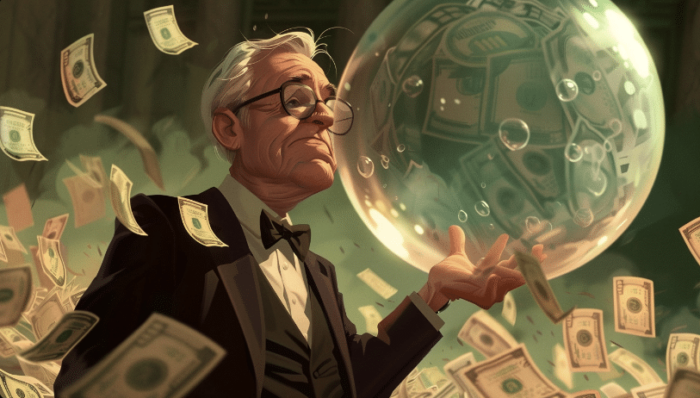“Recession Fatigue” is setting in as consumers struggle under rising interest rates, high inflation, and a declining stock market. Such was a point made in a recent CNBC article:
“As the Federal Reserve aggressively raises rates to combat persistent inflation, the tough stance could come at a price. Already, falling stock markets have wiped out more than $9 trillion in wealth from U.S. households.
Fed Chairman Jerome Powell also warned the central bank’s upcoming moves to fight soaring prices may cause “some pain” ahead.
And yet, 31% of Americans said they are not equipped for an economic downturn and are not actively doing anything to better prepare for one, according to a recent Bankrate.com report.”
Interestingly, while individuals continue to suffer from “Recession Fatigue,” the economy is technically not in a recession. At least not yet, as the National Bureau of Economic Research (NBER), the official arbiter of recession dating, has not made that assessment. With unemployment rates at record lows, jobless claims at historically low levels, and consumer spending still above trend, an official recession likely has not yet begun.
However, don’t ask the average American that question. According to that Bankrate.com report, the average American has an entirely different view.
“Recession depression, recession fatigue, whatever you want to call it, the hits to Americans’ financial security keep coming. First, it was the devastating coronavirus pandemic, followed by 40-year-high inflation, and now the growing risk of another downturn. Sustaining motivation for two-plus years to prepare for tough economic times can no doubt feel exhausting.” – Bankrate.com analyst Sarah Foster.
When broken down by generation, younger adults, or Gen Zers, are more likely to experience “recession fatigue” than millennials, Gen Xers, and baby boomers. In the report, “recession fatigue” is primarily afflicting younger generations, leaving them unprepared to face a recession. Such data certainly flies in the face of media reports of households having “strong financial balance sheets.”
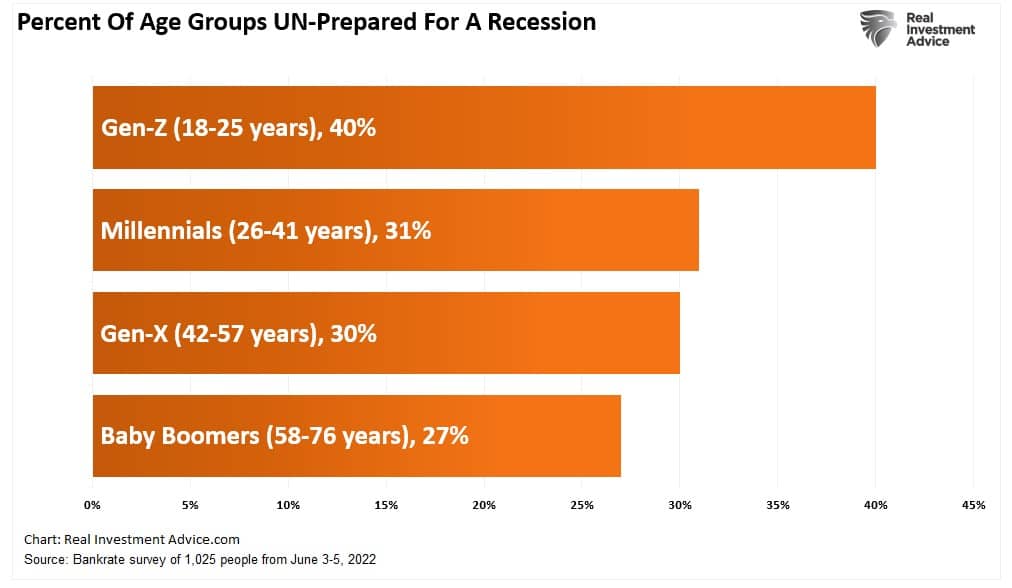
As we have discussed, households remain woefully short on savings despite a booming stock market over the last 12 years and $5 trillion in fiscal stimulus.
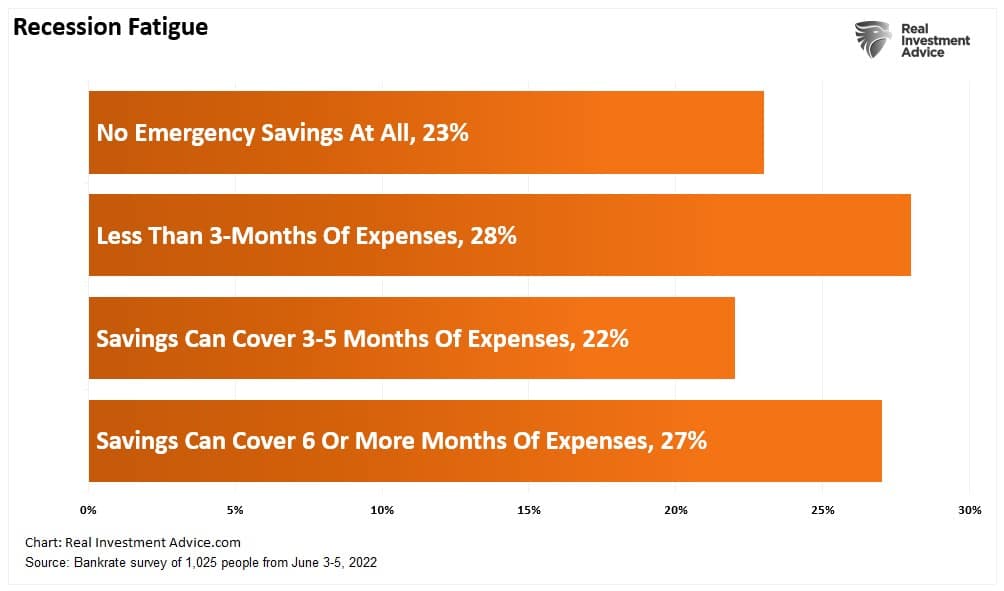
If “recession fatigue” is a problem now, it will worsen when unemployment increases.

The Great Termination
In 2020-2021, as the Government sent checks directly to households and companies forced older workers into early retirement, it became known as the “Great Resignation.” Naturally, that all worked well until inflation surged to the highest level in forty years, and all those that opted for “retirement” began looking for work to make ends meet.
Now, as the economy begins to slow, and individuals are already struggling with “recession fatigue” just trying to pay bills, the “Great Termination” is coming. Such is evident from a recent KPMG survey of C-Suite executives ringing alarm bells of a looming recession.
“Nine in ten CEOs in the U.S. (91%) believe a recession will arrive in the coming 12 months, while 86% of CEOs globally feel the same way, according to the international audit, tax, and advisory firm findings.
In America, half of the CEOs (51%) say they’re considering workforce reductions during the next six months — and in the global survey overall, eight in ten CEOs say the same.
It is “likely” and/or “extremely likely” that remote workers will be laid off first, according to a majority (60%) of 3,000 managers polled by beautiful.ai, a presentation software provider. Another 20% were undecided, and the remaining 20% said it wasn’t likely.” – MarketWatch
That sentiment is not surprising, given the symbiotic relationship between consumers and corporations. As shown, there is a high correlation between consumer sentiment and CEO confidence. Corporate revenues get derived from consumer demand. Therefore, when consumers contract spending due to “recession fatigue,” corporations take defensive actions to protect profitability.
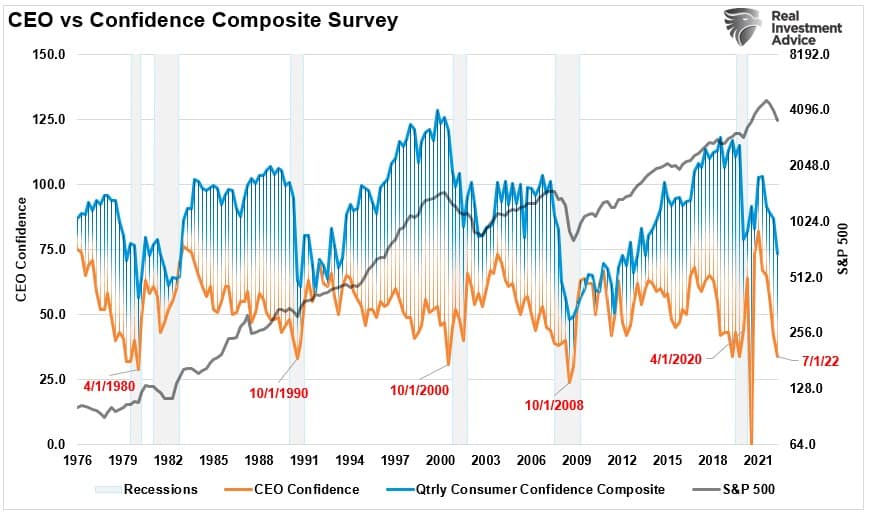
Notably, given that “good employees” are hard to find, expensive to train, and challenging to replace, companies tend to be “slow to hire and slow to fire.” As such, they start with essential cost-cutting and then proceed to cuts in capital expenditures (CapEx.) According to the NFIB survey data, the current level of CapEx spending is associated with previous recessions.
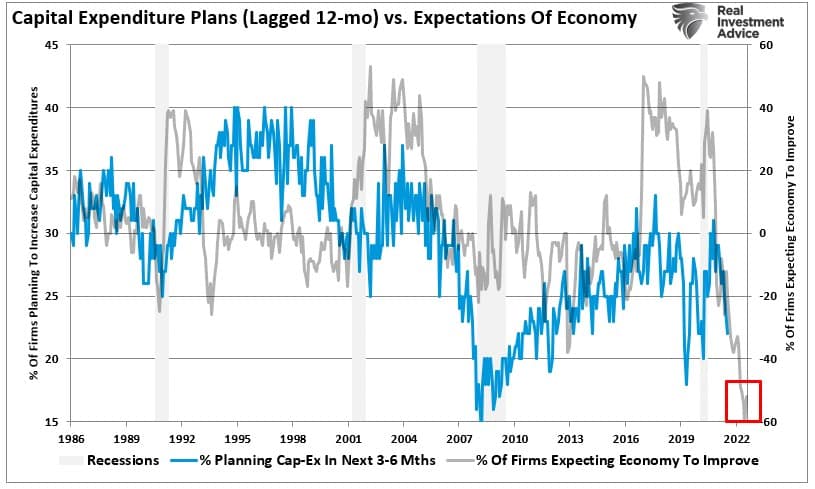
Once corporations reach the limits of cost-cutting, terminations eventually follow. As shown, CEO confidence at such low levels coincided with low jobless claims. Notably, jobless claims do not trend higher; they spike as terminations come rapidly.
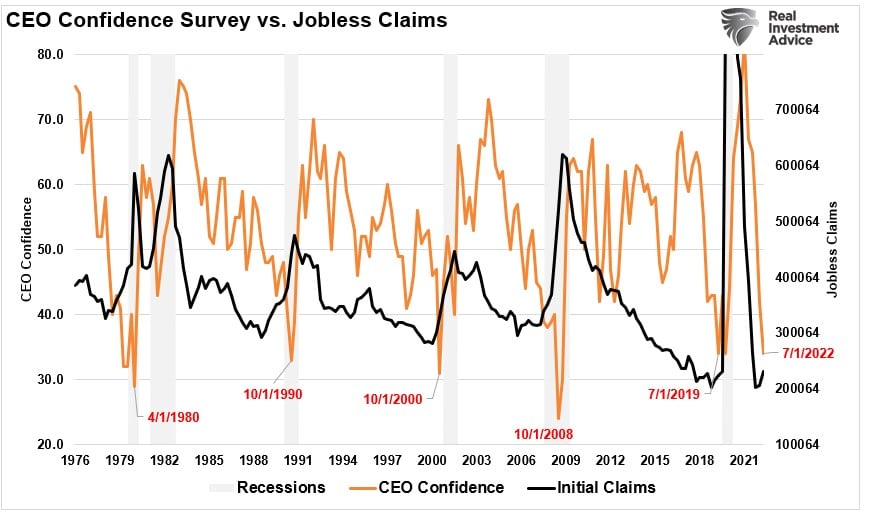
An old axiom states, “a recession is when your neighbor loses their job, it’s a depression when you lose yours.”

“Recession Fatigue” Not To End Soon
Numerous articles suggest the economy remains healthy due to the “fiscal health of household balance sheets.” To wit:
“Besides a booming labor market, exceptionally strong household balance sheets help keep spending high. Households’ net worth is far higher than pre-Covid for every single income quintile, providing some buffer to the headwinds of inflation and dour consumer sentiment.” – Harvard Business Review
While that is a true statement, the reality is far more insidious. Most of those savings are held by the top 10% of income earners. Those are the same individuals that own about 90% of the household stock market wealth.
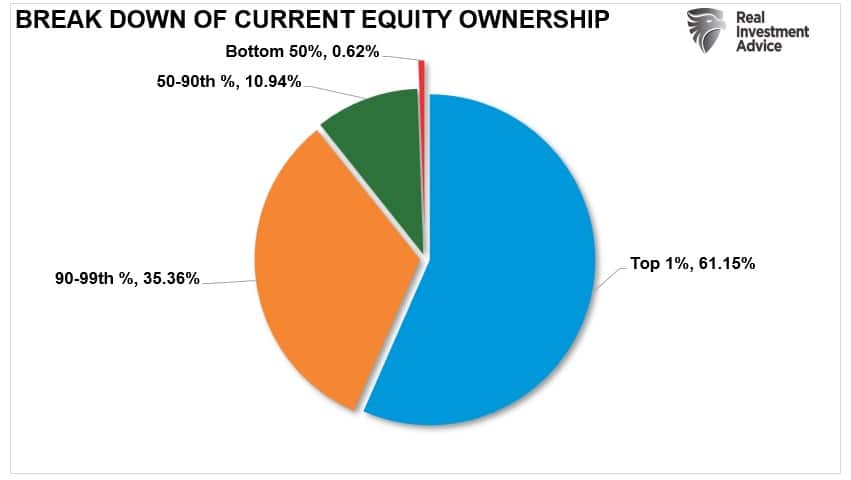
It is a far different picture for the bottom 90% of Americans. Those households have few choices but to tap credit cards to fill the gap between living costs and incomes.
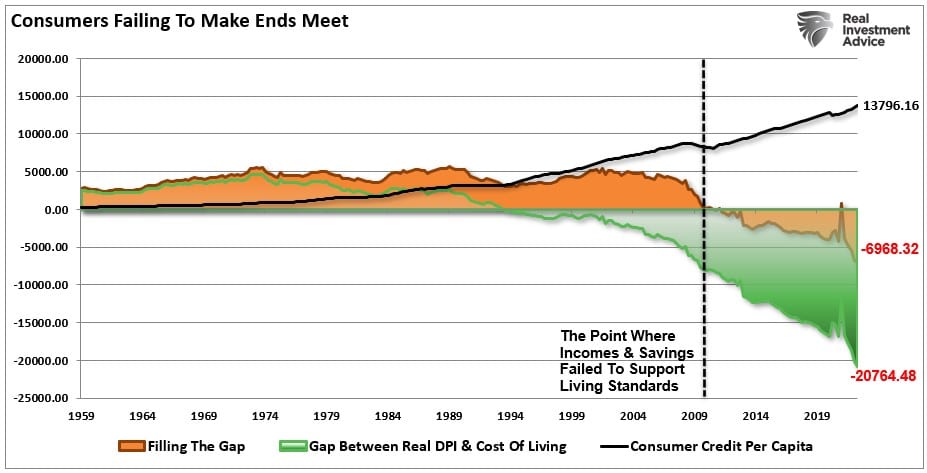
According to the latest New York Federal Reserve report, credit card debt surged by $46 billion in the second quarter. As shown above, such is not surprising as consumers struggled to maintain their standard of living. The 13% annualized increase in new debt was the largest in more than 20 years. Moreover, aggregate limits on cards marked their most significant increase in the last decade.
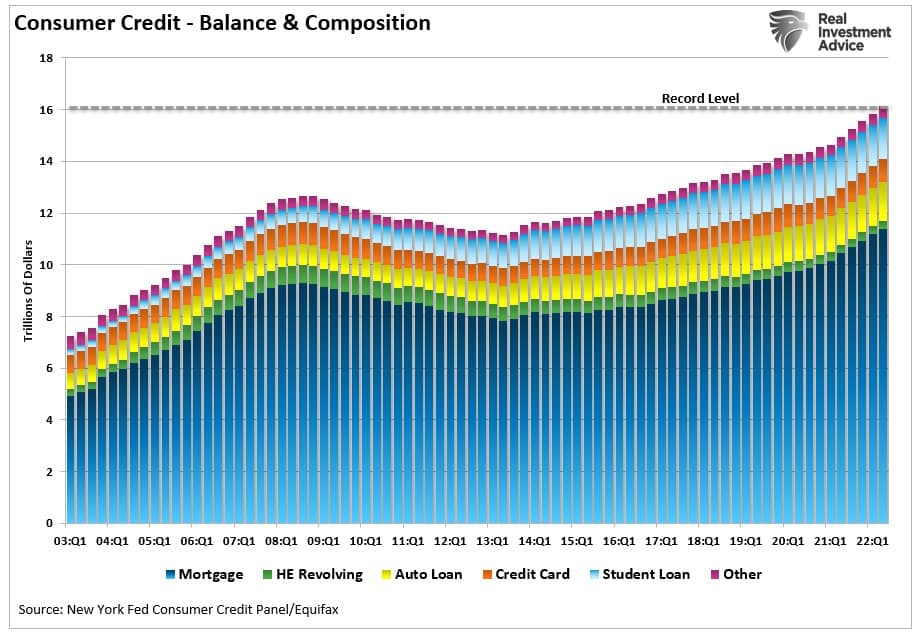
With the pandemic-driven savings now spent, 60% of Americans say they are living paycheck-to-paycheck. While consumers can supplement their disposable incomes with debt to offset rising inflationary pressures, it is not a long-term solution. Unfortunately, when unemployment arrives, that will no longer be an option. The data suggests the U.S. economy is on the verge of a much deeper bout of “recession fatigue” as consumption grinds to a halt.
One thing is sure. When the economy breaks, inflation will no longer be a problem. What will be problematic is the Federal Reserve scrambling to fix what they have once again broken.
Lance Roberts is a Chief Portfolio Strategist/Economist for RIA Advisors. He is also the host of “The Lance Roberts Podcast” and Chief Editor of the “Real Investment Advice” website and author of “Real Investment Daily” blog and “Real Investment Report“. Follow Lance on Facebook, Twitter, Linked-In and YouTube
Customer Relationship Summary (Form CRS)
Also Read
